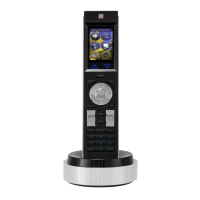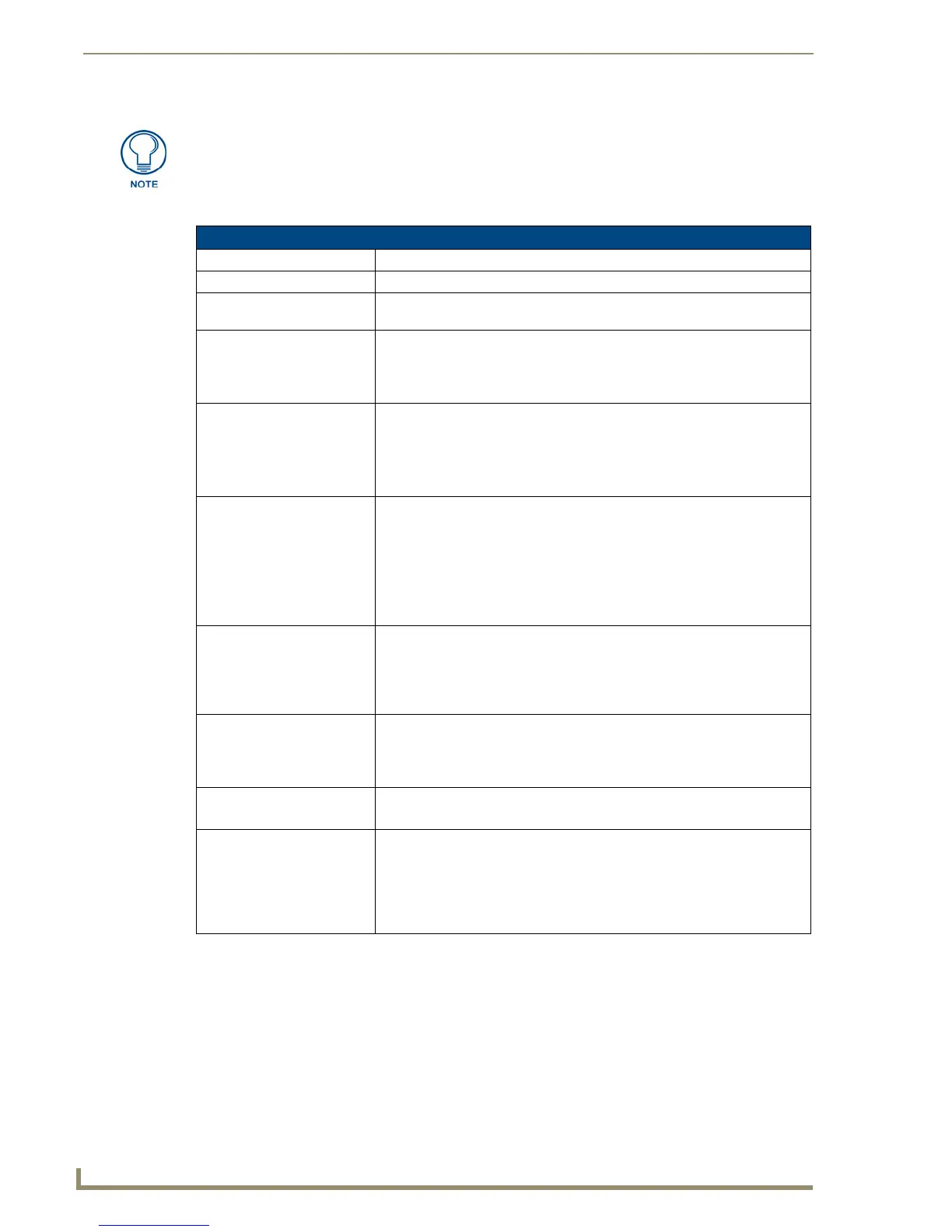TPDesign4 Program
4
TPDesign4 Touch Panel Design Software (v2.10 or higher)
In its default configuration, from top to bottom, left to right, the work area main components are:
Refer to the online help for detailed descriptions of each menu item and toolbar button.
TPDesign4 Work Area Components
Item Description
• Title Bar Lists the name of the active Project file.
•Menu Bar Contains the main menu options (File, Edit, Panel, Page, Button, States, Lay-
out, View, Window, and Help).
•Toolbars The toolbars provide shortcuts to various program functions and controls. You
can choose which toolbars to show in the workspace via the View > Toolbars
sub-menu.
See the Toolbars section on page 5 for details.
• Design View Windows Each tabbed Design View Window represents a Touch Panel page or popup
page. Note that a MDI tab is displayed for each opened page.
Use the View > MDI Page Tabs option to toggle the page tabs. When this
option is enabled, a tab is displayed for each open page.
See the Design View Windows section on page 6 for details.
• Workspace Navigator Contains two tabs:
• The Pages tab contains a tree structure representing all open projects, and
their pages and popup pages. Use the Pages tabs to open/edit the pages /
popup pages in each project.
• The Function Maps tab allows you to view/edit the function codes
associated with each page.
See the Workspace Navigator section on page 8 for details.
• Properties Control Window Contains three tabs: the General tab allows you to view/edit general (non-
state oriented) button properties, the Programming tab allows you to edit pro-
gram-related parameters, and the States tab allows you to view/edit button
state information.
See the Properties Control Window section on page 9 for details.
• State Manager Window Displays each state of the selected button as a thumbnail image in this win-
dow. The State Manager window allows you to view/edit the various states of
a selected button.
See the State Manager Window section on page 10 for details.
• Transfer Status Window Displays the status of each file transfer in queue.
See the Transfer Status Window section on page 10 for details.
•Status Bar Located along the bottom edge of the application window, the Status Bar can
show the current XY cursor position, and (for the button the mouse is over):
Channel code, Address code, Level code, button size, panel revision, Feed-
back and Initial page file target information. The status bar also indicates the
status of your connection to the NetLinx Master.
See the Status Bar section on page 12 for details.

